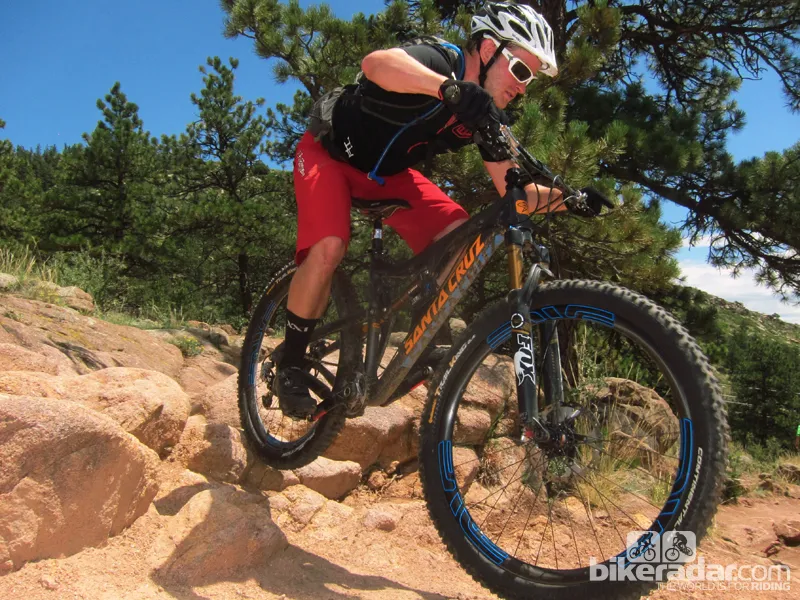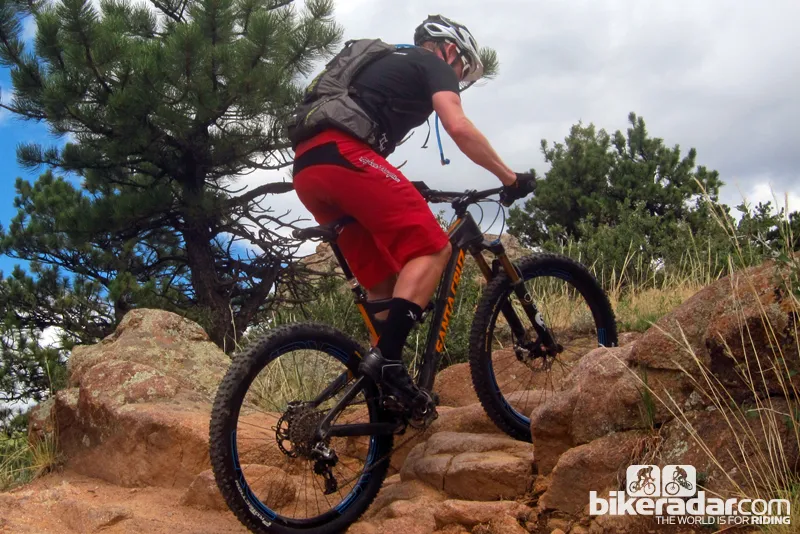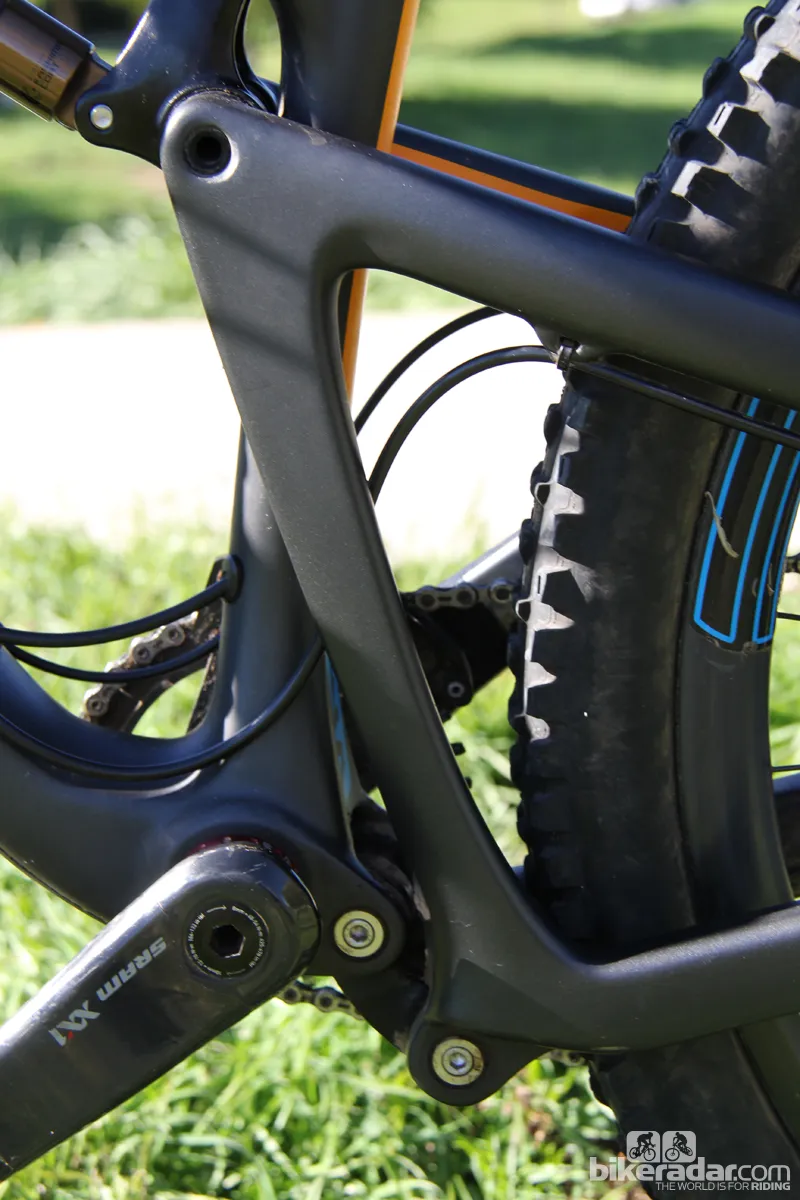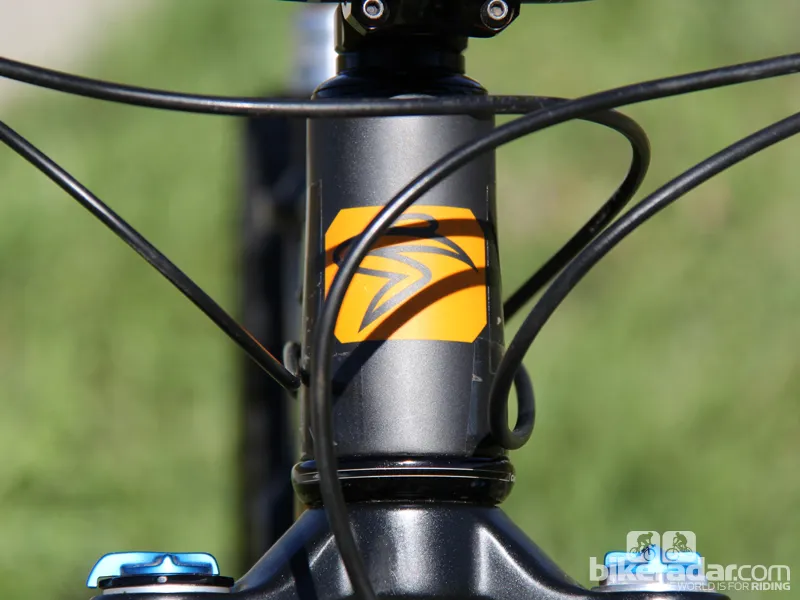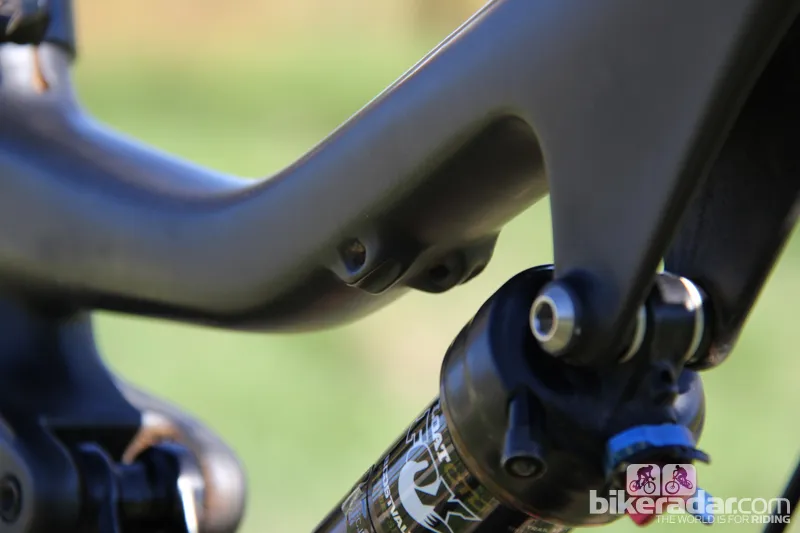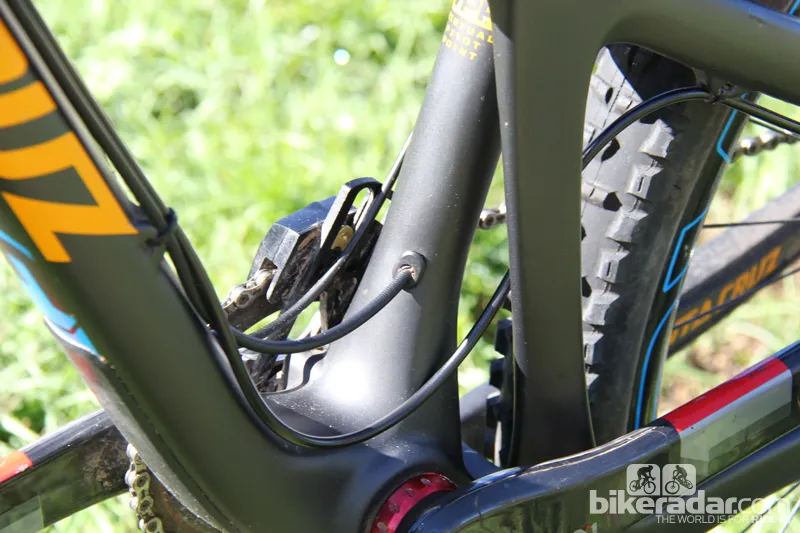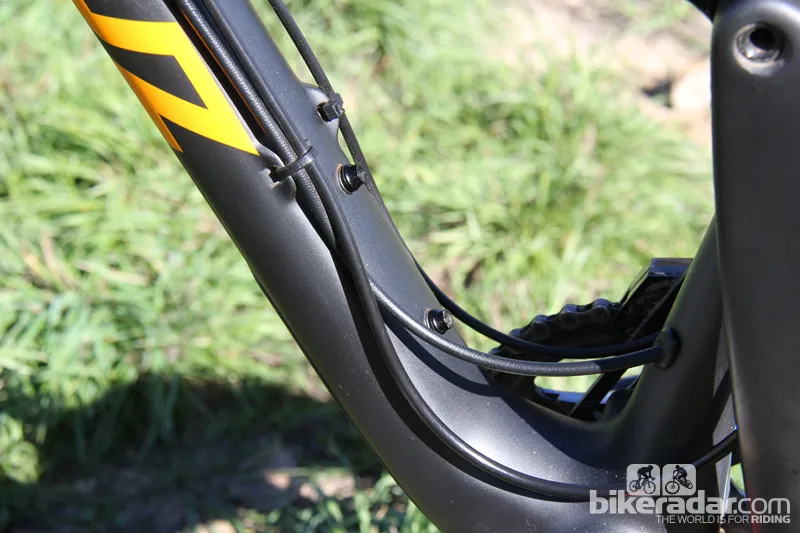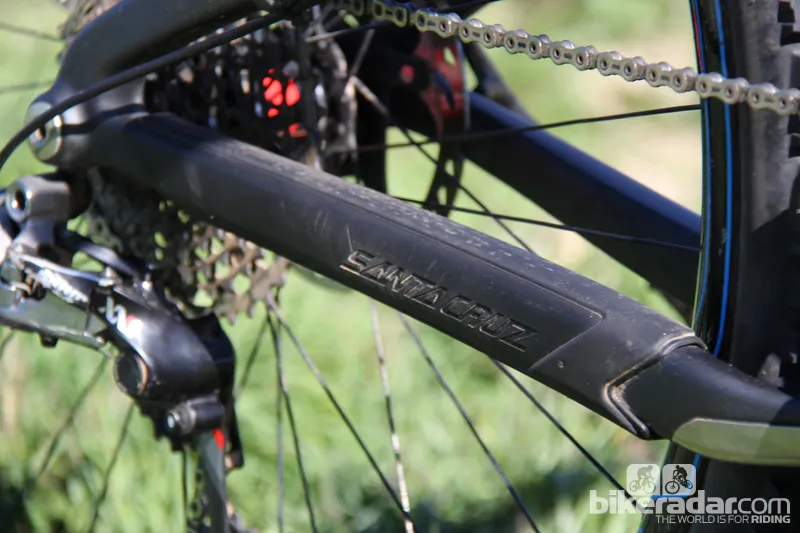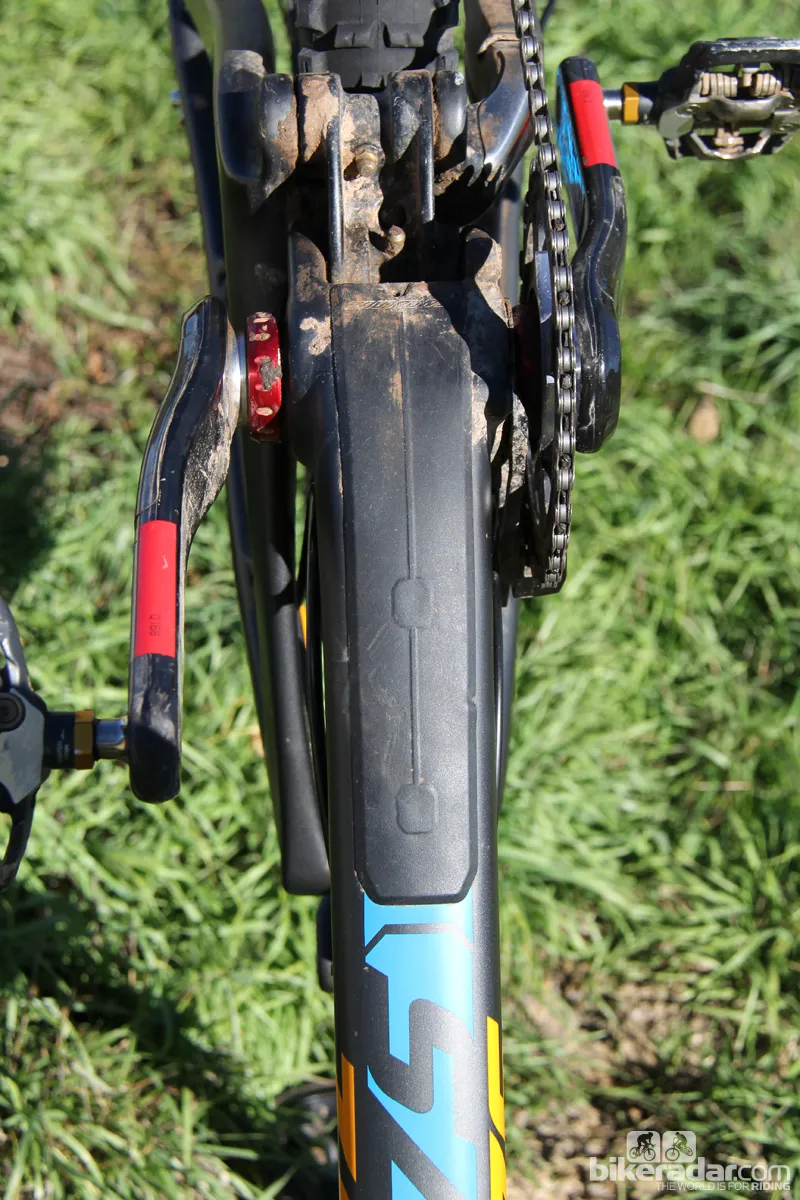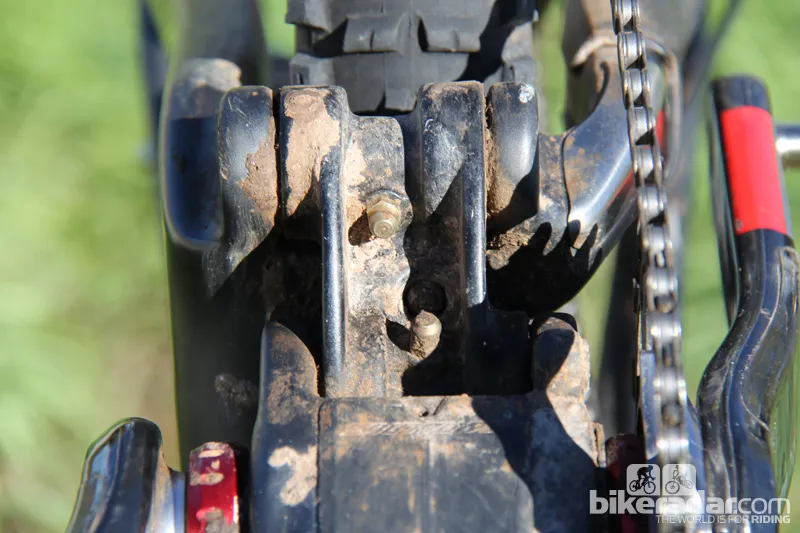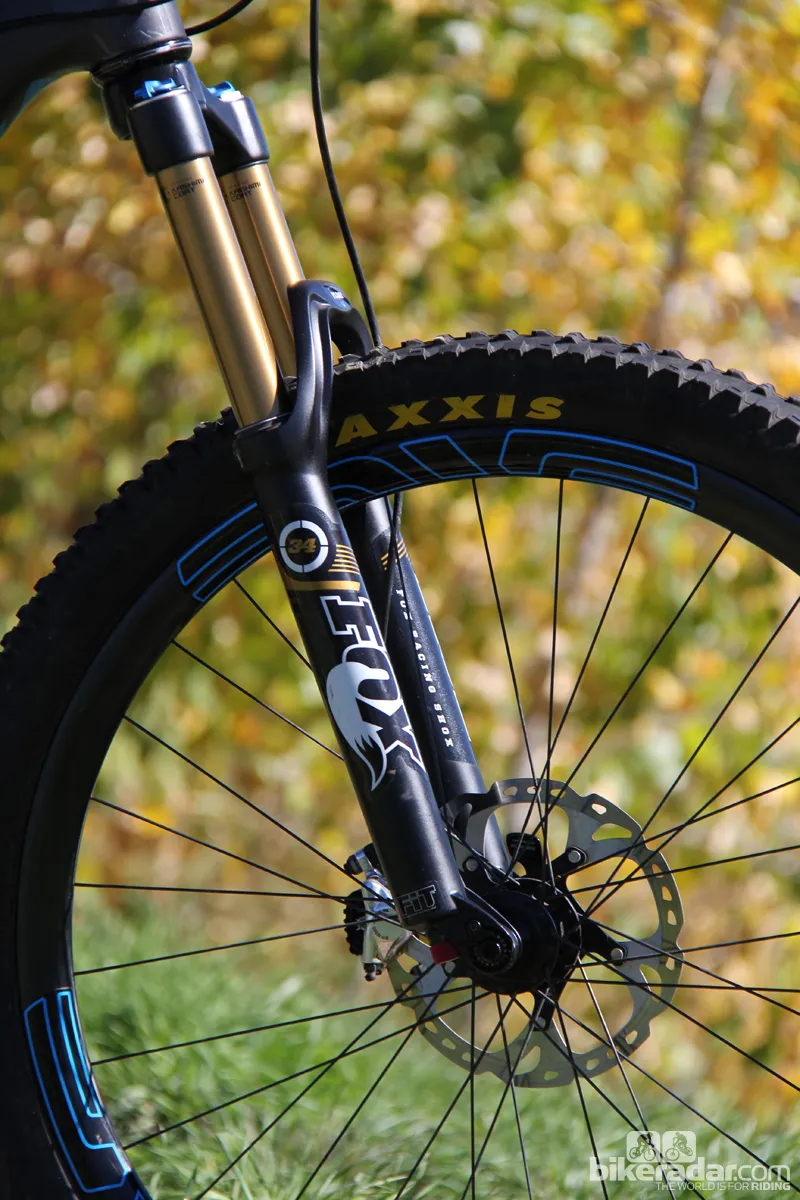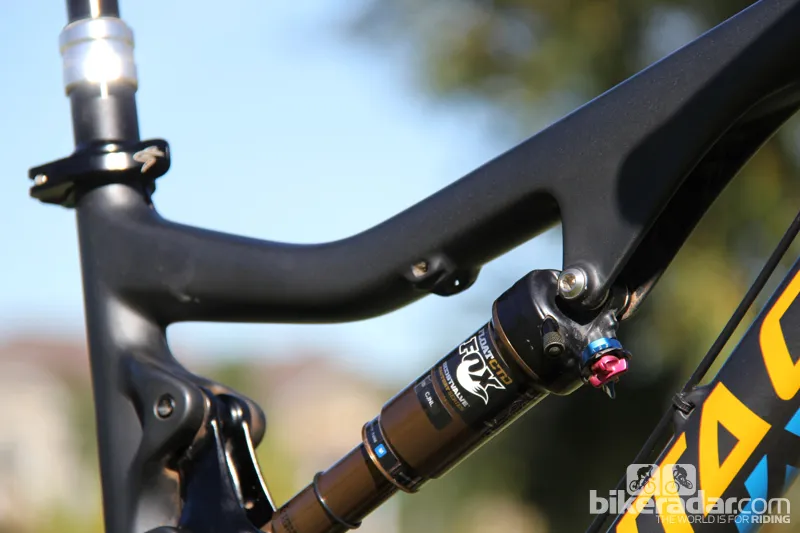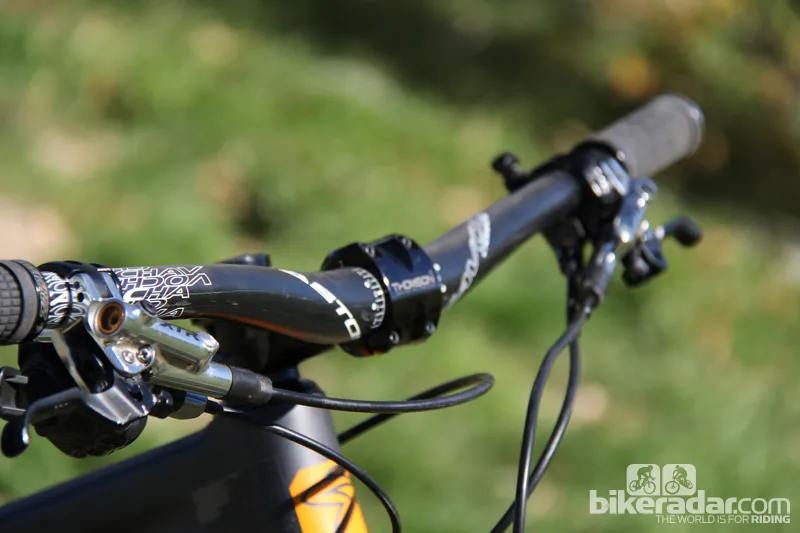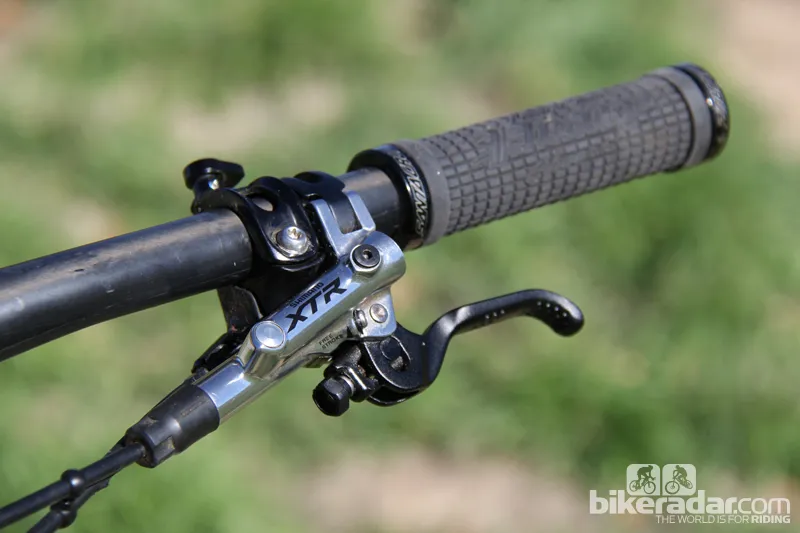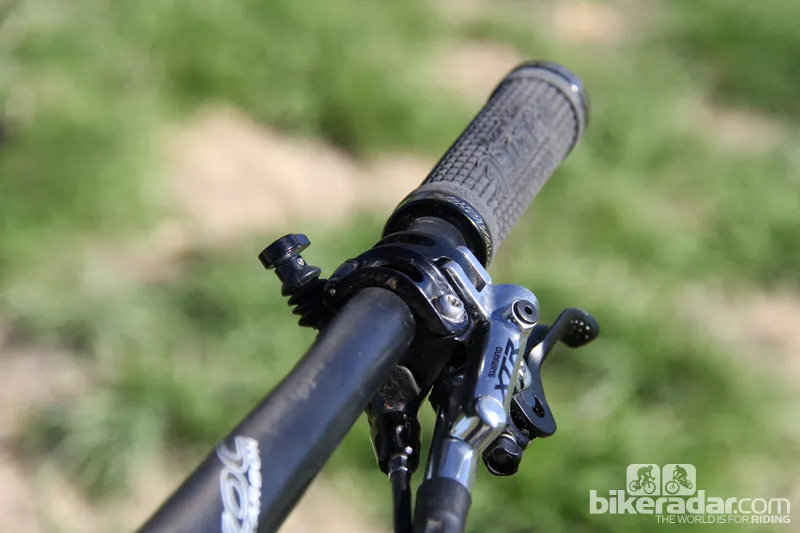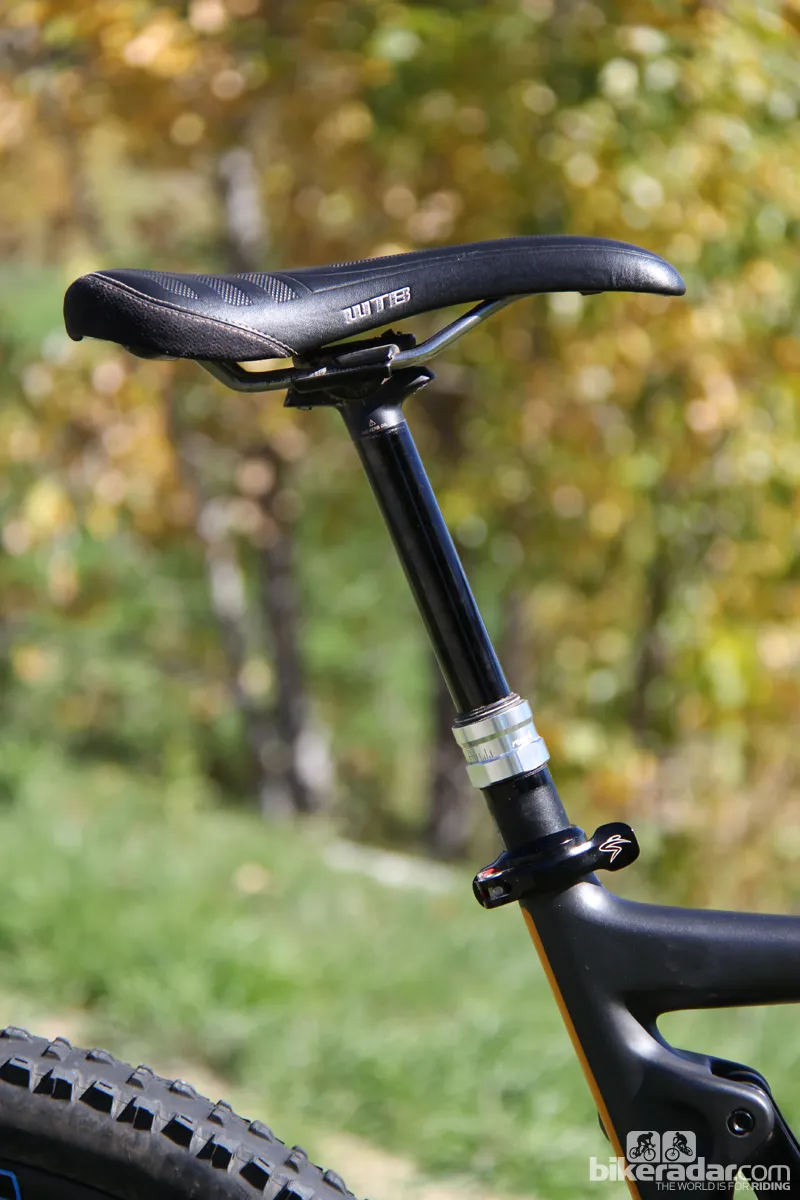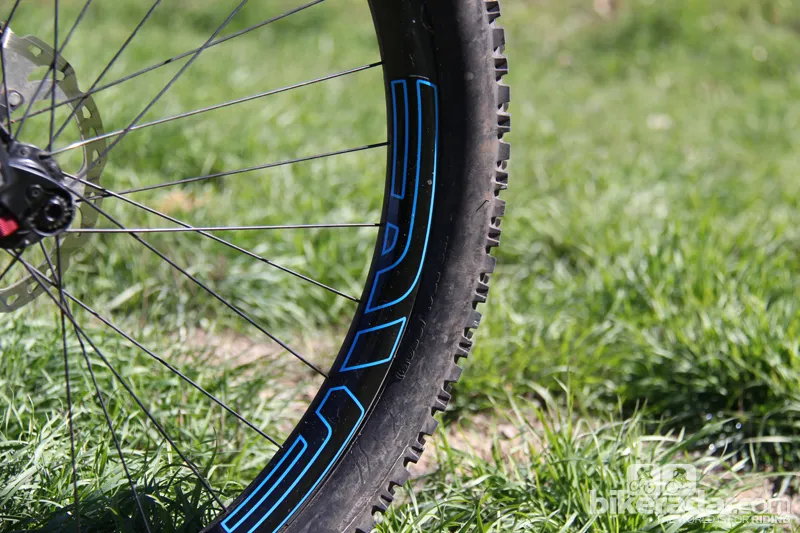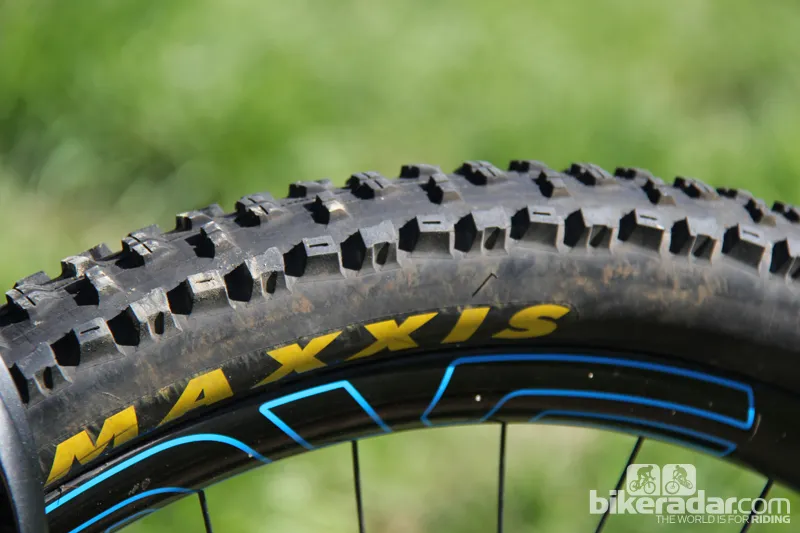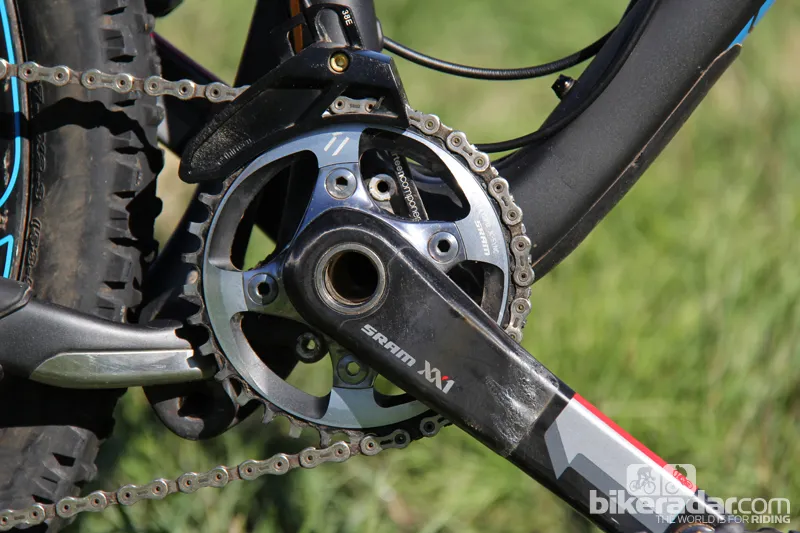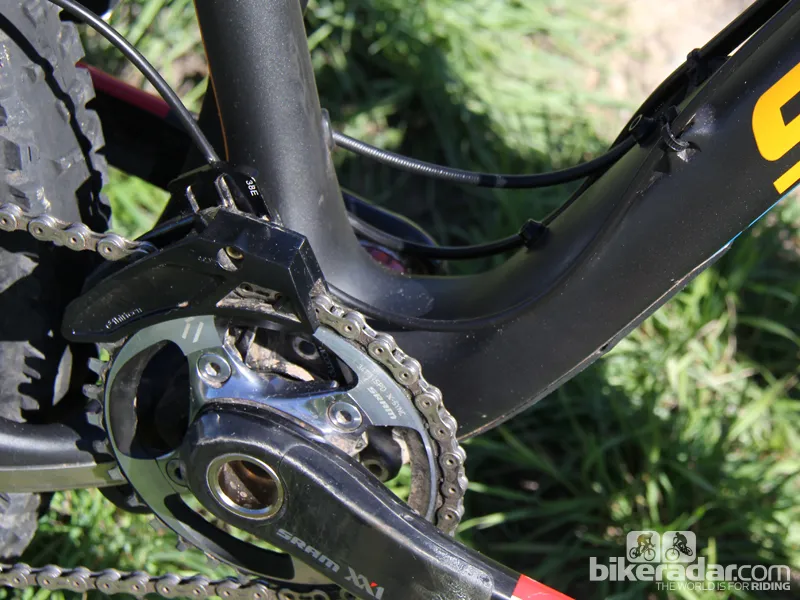The Bronson is offered in both carbon and aluminum versions. They were the first two models in a six-bike 650b (27.5in) salvo that was launched by Santa Cruz Bicycles this year.
The wheel size is perhaps the least interesting aspect of this carbon wonder bike though. The light and stiff carbon frame, 150mm of VPP suspension and impeccable trail manners are what make the Bronson a class leader.
- HIGHS: Good handling, stiff chassis, top shelf kit backs up the steep price tag
- LOWS: 1x11 drivetrain is not for everyone
- BUY IF… You’re looking for a versatile, high performance trail bike
Ride and handling: neutral handling, stiff chassis and firm suspension
Over the course of six months of testing, the Bronson has been our weapon of choice for enduro races in Oregon and Colorado – we’ve ridden it on rough-and-tumble trails in Moab, Utah, and used it to tackle steep Colorado singletrack. In every case it has proven to be an exceptionally capable machine. The Bronson is a true all-mountain bike; it’s a surefooted climber and a confident descender.
The Bronson has middle-of-the-road geometry by enduro standards, which won’t surprise the rider with any quirks or present much of a learning curve. There are certainly bikes that are lower and slacker, with shorter chainstays, but the engineers at Santa Cruz put together a set of numbers that, when taken as a whole, work quite well in all situations.
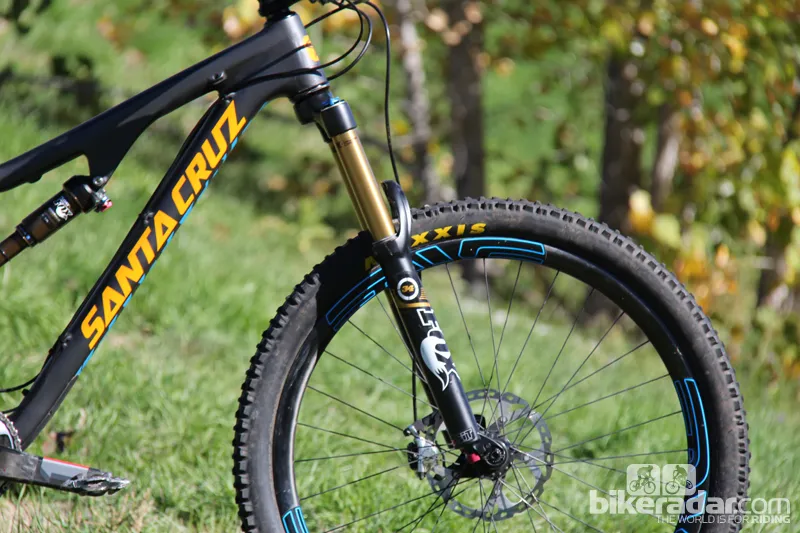
The 67-degree head tube strikes a nice balance between stability and agility
The 67-degree head tube is on par with most other 150mm travel bikes. It’s slack enough to get the wheel out in front of the rider on the way down, without making the front end feel ponderous while climbing. The 73-degree seat tube angle puts the rider in pedal-friendly position and 584mm effective top tube on our size medium test bike felt spot-on as well.
The 13.6in (346mm) high bottom bracket is neither remarkably low nor noticeably high. The Bronson does lack the carvy, low-slung feel of competitor’s bikes with lower bottom brackets. On the flipside, the lack of a really low bottom bracket is an asset when cranking through rocky chunder – the type of terrain all 150mm travel bikes should excel at. Chainstay length is slightly longer than expected at 17.3in (439mm), though the Bronson is still quite agile and able to navigate low-speed tech with ease.
Santa Cruz has a lot of experience in carbon construction and it shows in the Bronson’s impressive frame stiffness. The bike’s build, particularly the ENVE rims, which are unyielding to a fault, lend to the very precise steering feel.
It’s not just the frame and wheelset that give the Bronson impart a rock solid sensation. The Bronson’s suspension is quite firm for a 150mm travel bike. “Think rally car, not monster truck,” said Santa Cruz product manager Josh Kissner.
The stock Fox Float Evolution CTD shock gives the Bronson a race-tuned feel — meaning the suspension has a tendency to chatter over the top of the trail like a World Cup gravity rig, rather than diving deep into its stroke to handle every hit. The Bronson has good, but not great, small-bump sensitivity. According to Santa Cruz, that’s the trade-off for the ability to absorb successive high-speed impacts with poise.
One notable modification we made to our Bronson was to swap the stock shock for Fox’s new Float X shock. The Float X shares the same external rebound and compression adjustments as the standard Float with its damping circuit located on the piggyback reservoir. The Float X is an upgrade you should consider if purchasing the Bronson. It extends the bike’s downhill capabilities, making the suspension suppler and more consistent on extended downhill runs.
We also experimented with swapping the 150mm Fox 34 Float CTD fork for a 160mm TALAS model. This relaxed the handling and did lead to a bit of wandering while climbing. If you’re more interested in the descent, this is something to consider as well, though we didn’t feel the additional 10mm of travel was absolutely necessary.
Frame features: standard Santa Cruz spec
Aside from being the first Santa Cruz model shod in 650b wheels, the Bronson treads familiar ground for those familiar with the brand.
The frame is constructed using the same layup methods employed in the rest of the Santa Cruz carbon family. The front and rear triangles are constructed as whole units, as opposed to bonding several segments together. The result are frames with impressive strength and minimal weight. Our medium carbon frame weighs 5.3lb (2.4kg) with the shock, seatpost collar and two water bottle bolts.
The Bronson gets its 150mm of rear wheel travel from the VPP suspension, which uses two counter-rotating links to control the shock. The lower link has two grease ports to purge contaminated grease from the collet bearings to keep the suspension moving smoothly for many years to come. The bearings even have a lifetime warranty. Riders on a tight budget should consider the updated single-pivot Heckler, which has geometry that mirrors the more expensive Bronson.
The industry may be awash in different standards, but Santa Cruz has made use of those that its engineers feel make sense and provide tangible benefits, while ignoring those that don’t.

Threaded bottom brackets are still the way to go for Santa Cruz
Case in point: the Bronson has a tapered head tube and a 142x12mm rear through-axle. It does not have a press-fit bottom bracket, instead Santa Cruz uses a tried and true 73mm-wide threaded bottom bracket shell for years of creak-free riding. Similarly, the Bronson has external cable routing for easy servicing, save for the internal routing through the seat tube for a Stealth Reverb dropper seatpost.
Equipment: little left to be desired
Santa Cruz sent us the Bronson carbon with the company’s top build. The US$10,009 / £8,619 price may be out of reach for many of us. Thankfully, there are more affordable builds starting at US$4,299 / £4,399 for the Bronson Carbon and US$3,399 / £3,299 for the alloy version.
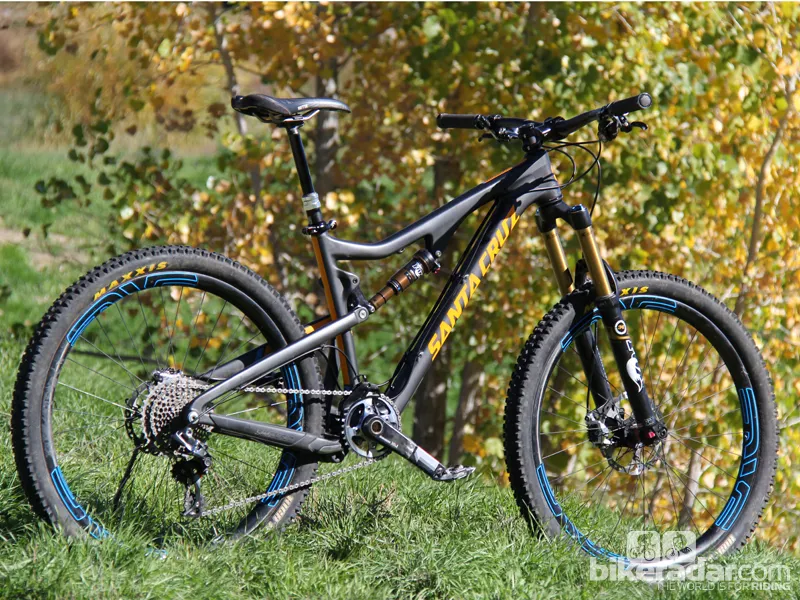
This spec is nearly identical to how we would build up the Bronson – if someone else was footing the bill!
SRAM’s XX1 group continues to impress us with its crisp shifting and flawless operation. Our Bronson came with a BB-mounted e*thirteen XCX chainguide for additional protection against dropped chains.
The 34T X-Sync chainring was a bit tall for some of the longer, extended technical climbs we encountered. We’d likely downsize to a 32T if it were our own rig.
The Fox suspension was good, but not great. The 2013 34 Float CTD fork left us wanting more support through the mid-stroke. As previously mentioned, the stock Float CTD rear shock is capable, though the addition of the Float X certainly extended the Bronson’s capabilities.
The Shimano XTR Trail brakes proved once again to be outstanding. The 180mm front/160mm rear rotor combo was ideal. As was the RockShox Reverb Stealth seatpost. Hats off to Santa Cruz for using a 'right-sided' lever mounted to the left end of the handlebar. In our experience this tucks the lever neatly under the handlebar while making it easier to operate.
The ENVE AM rims laced to DT-Swiss 240 hubs proved incredibly stiff and quite durable. Mounted to these pricey hoops were a pair of 27.5 x 2.3in Maxxis High Roller II tires that have sturdy sidewalls and are easy to set up tubeless.
Last but not least, the stubby Thomson X4 stem and 750mm-wide Easton Havoc Carbon handlebar are good matches for the Bronson’s aggressive personality.
The total weight of our test bike was 26.6lb (12kg).
We’d like to see Santa Cruz offer a build kit for the Bronson with a burlier, enduro-centric spec that would include a piggy-back shock such as the Float X or Monarch Plus, a 160mm fork with travel adjust, wider tires with heavier casings, and a chainguide with a bashuard to protect the very expensive XX1 chainring from rock strikes.
Verdict: The Bronson Carbon is an impressive bike: it’s light, stiff and incredibly capable. The race-tuned suspension is not for the timid; it rewards riders who prefer to charge through technical sections.
First ride on the bronson carbon
Video: First Ride on the Bronson Carbon. Note, the build of the bike in this video is different to the build of the bike reviewed
